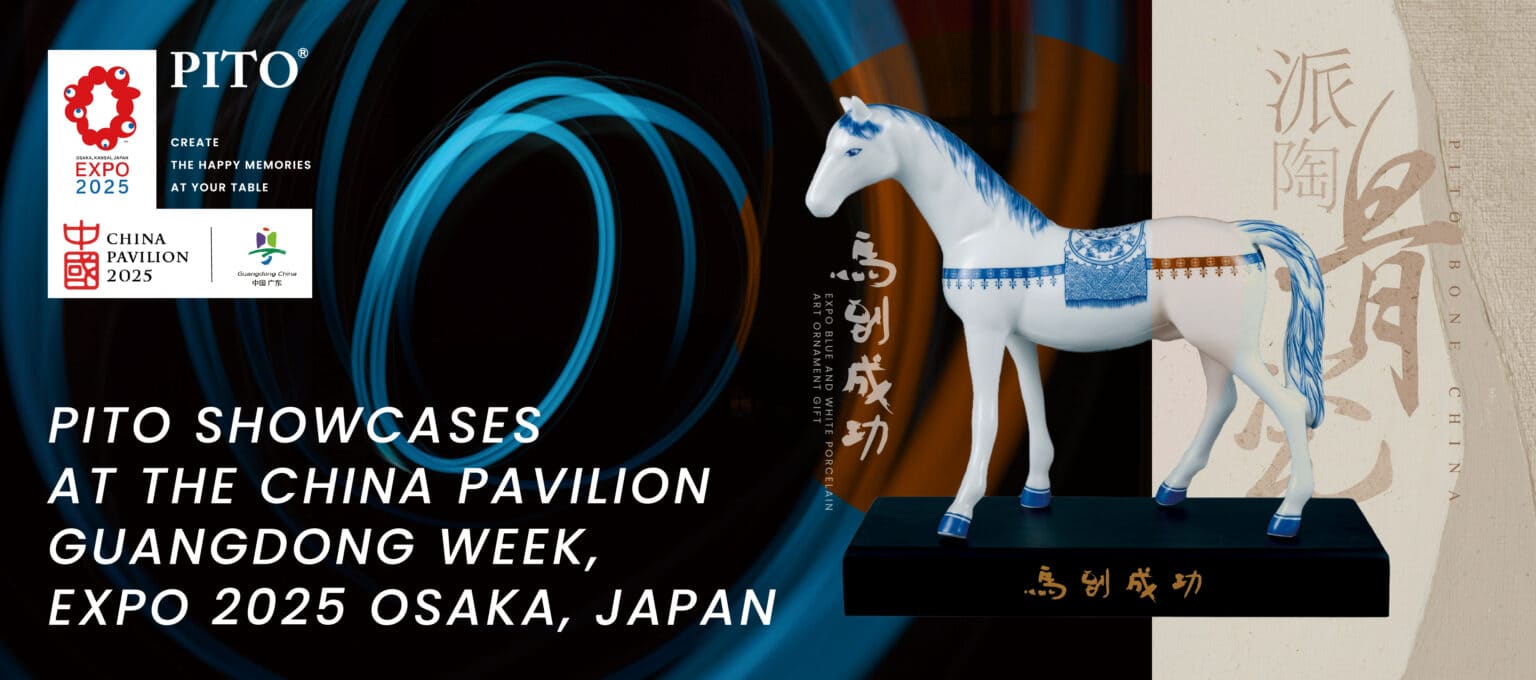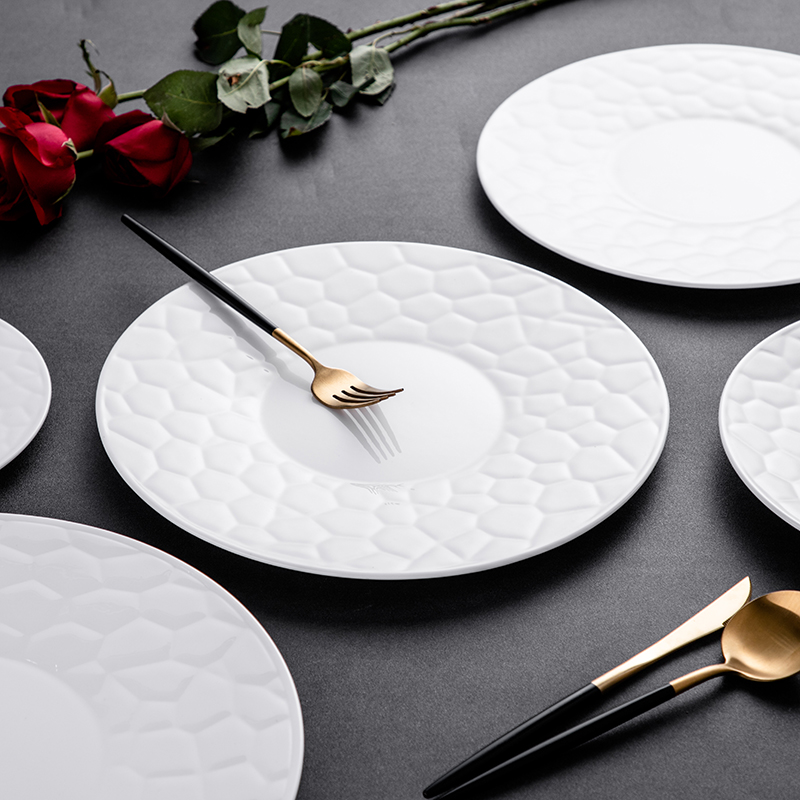
Os pratos de cerâmica são há muito tempo parte integrante da nossa experiência gastronómica, nos proporcionando um resistente e esteticamente superfície agradável para desfrutar das nossas refeições. Esses versáteis itens de jantar têm uma importância significativa no mundo da louça de mesa, encontrando um equilíbrio entre funcionalidade e elegância.
Quer seja um jantar casual em família ou uma reunião formal, placas cerâmicas são a escolha certa para muitas famílias e restaurantes. Nesta postagem do blog, vamos nos aprofundar o processo de fabricação de placas cerâmicas, lançando luz sobre o intrincado trabalho artesanal por trás desses companheiros de jantar essenciais.
O básico das placas cerâmicas
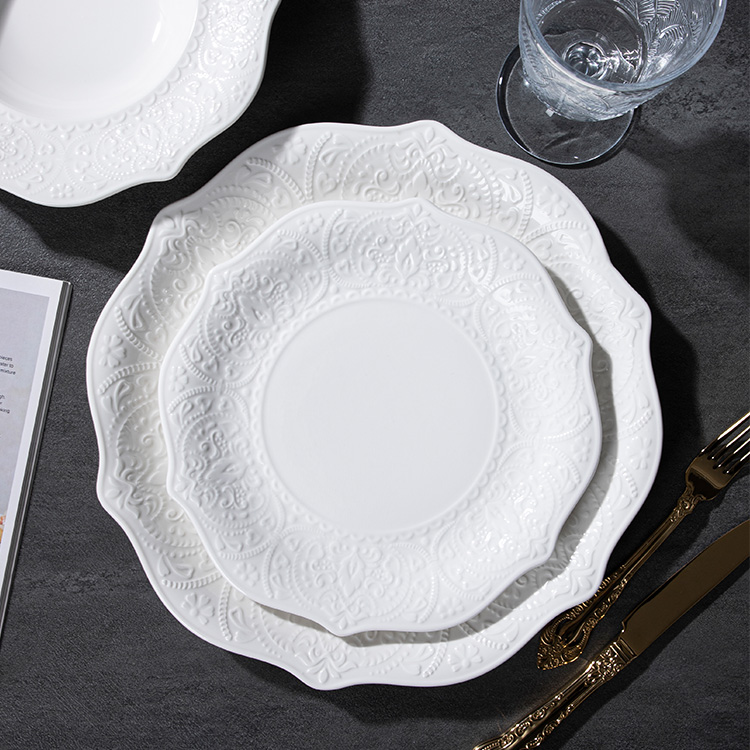
As placas cerâmicas são conhecidas pela sua durabilidade, versatilidade, e apelo estético. Ao contrário de suas contrapartes de plástico ou vidro, placas de cerâmica oferecem uma sensação de sofisticação e substância a qualquer experiência gastronômica. Aqui estão alguns pontos-chave sobre placas cerâmicas:
- Durabilidade: Placas de cerâmica são feitas de argila, que é queimado em altas temperaturas para criar um material resistente e resiliente. Isso os torna resistentes a rachaduras, arranhões, e desgaste geral, garantindo que eles possam suportar os rigores do uso diário.
- Retenção de Calor: Uma das características marcantes das placas cerâmicas é a capacidade de reter calor. Isso significa que sua comida permanece quente por mais tempo, permitindo uma experiência gastronômica agradável.
- Variedade de estilos: Placas de cerâmica vêm em uma ampla variedade de designs, cores, e padrões, tornando mais fácil encontrar a combinação perfeita para qualquer configuração de mesa ou preferência pessoal.
- Material de qualidade alimentar: Placas de cerâmica são consideradas seguras para consumo alimentar, já que normalmente são feitos de materiais naturais, sem produtos químicos ou toxinas prejudiciais.
Agora que lançamos as bases, vamos nos aprofundar no intrigante processo de como as placas de cerâmica são fabricadas. Ao compreender as etapas intrincadas envolvidas, podemos apreciar ainda mais o trabalho artesanal por trás desses companheiros de refeição essenciais.
O Processo de Fabricação de Placas Cerâmicas
A. Preparação de Matéria Prima
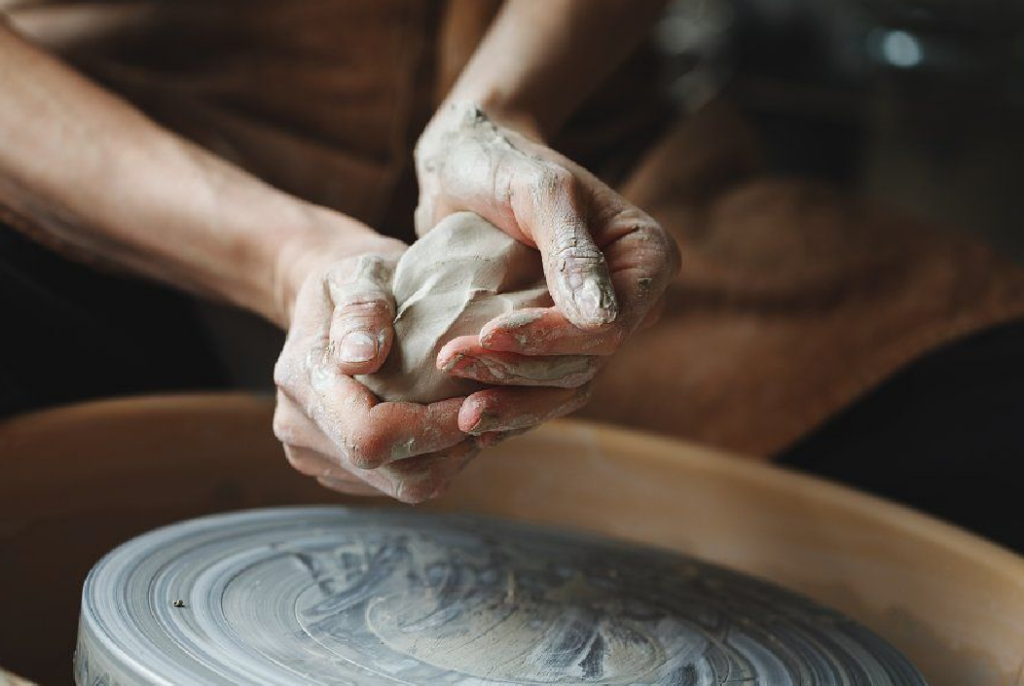
fonte: Pinterest
Antes que o processo de fabricação da placa cerâmica possa começar, as matérias-primas devem ser devidamente preparadas. O principal componente das placas cerâmicas é argila, que muitas vezes é proveniente de minas de argila especializadas. Aqui está o etapas principais na preparação de materiais:
- Ordenação: A argila colhida é inicialmente classificada para remover impurezas como pedras, galhos, e outras partículas estranhas.
- Limpeza: A argila é cuidadosamente limpa para eliminar quaisquer impurezas remanescentes, garantindo um material puro e consistente.
- Misturando: Vários aditivos podem ser misturados com a argila para melhorar as suas propriedades, como aumentar sua plasticidade ou melhorar suas características de queima. Esses aditivos podem incluir feldspato, quartzo, e caulim.
B. Formando as Placas
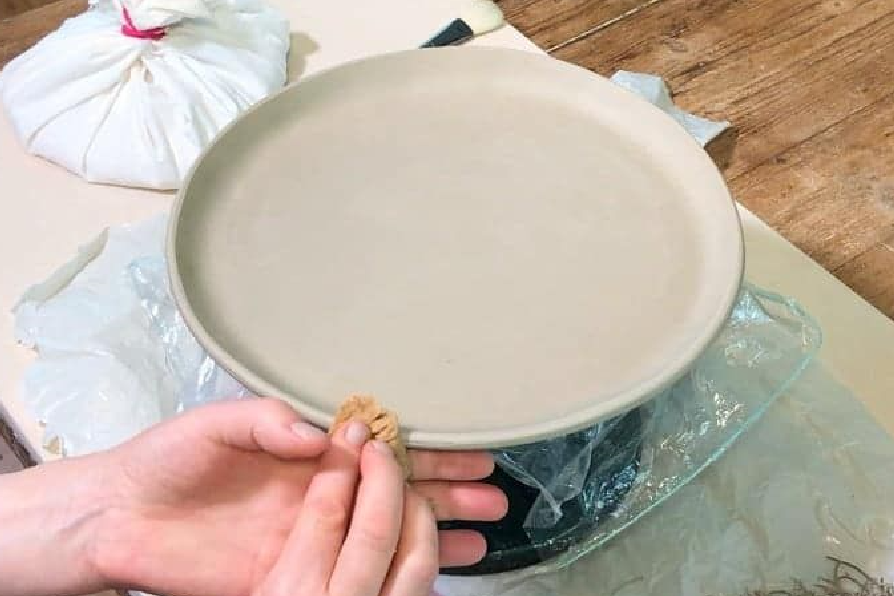
fonte: Pinterest
Depois que a argila estiver preparada, é hora de moldá-lo no formato desejado da placa de cerâmica. Há vários métodos usado para formar placas cerâmicas, Incluindo:
- Arremesso de mão: Artesãos habilidosos utilizam uma roda de oleiro para moldar a argila manualmente. Através de uma combinação de girar a roda e manipular a argila, eles criam o formato e tamanho de placa desejados.
- Fundição deslizante: Este método envolve derramar argila líquida, conhecido como deslizamento, em um molde de gesso. O molde absorve água da barbotina, permitindo que uma camada de argila se forme na superfície do molde. Quando a espessura desejada for alcançada, excesso de deslizamento é derramado, deixando a argila secar e solidificar.
- Moldagem por prensagem: Aqui, a argila é prensada em um molde pré-fabricado usando pressão hidráulica ou pneumática. Este método permite a produção em massa de placas uniformes com formatos consistentes.
C. Secagem e Queima
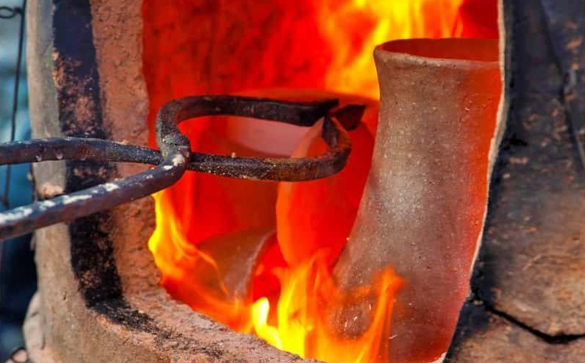
fonte: Pinterest
Depois que as placas são formadas, devem passar por um processo de secagem e queima para transformar a argila em um sólido, forma durável. O passos envolvidos são os seguintes:
- Secagem: As placas são deixadas secar em temperatura ambiente para remover gradualmente o excesso de umidade. Este processo de secagem gradual ajuda a evitar rachaduras e empenamentos.
- Disparo: As placas secas são colocadas em um forno e submetidas a altas temperaturas variando de 1000 para 2000 graus Celsius. Este processo de queima funde as partículas de argila, criando uma estrutura cerâmica sólida. A temperatura exata e a duração da queima dependem do tipo específico de argila e das características desejadas da placa.
D. Vidros e Decoração
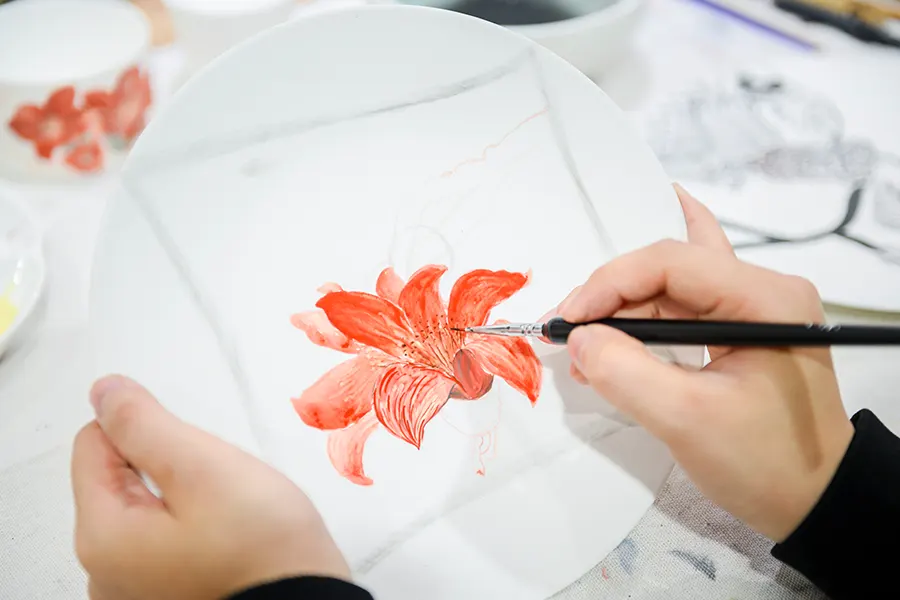
Uma vez que as placas foram disparadas, eles podem ser envidraçados para melhorar sua aparência e funcionalidade. O processo de envidraçamento envolve:
- Aplicação de esmalte: Uma camada de esmalte é aplicada na superfície da placa, normalmente feito de uma mistura de minerais e pigmentos. O esmalte melhora o apelo visual da placa e fornece uma camada protetora.
- Decoração: Várias técnicas podem ser empregadas para decorar as placas cerâmicas, como pintar desenhos complexos à mão, usando estênceis ou modelos, ou mesmo métodos de impressão digital. Esses elementos decorativos acrescentam um toque pessoal e apelo estético ao produto acabado.
E. Acabamento e Controle de Qualidade
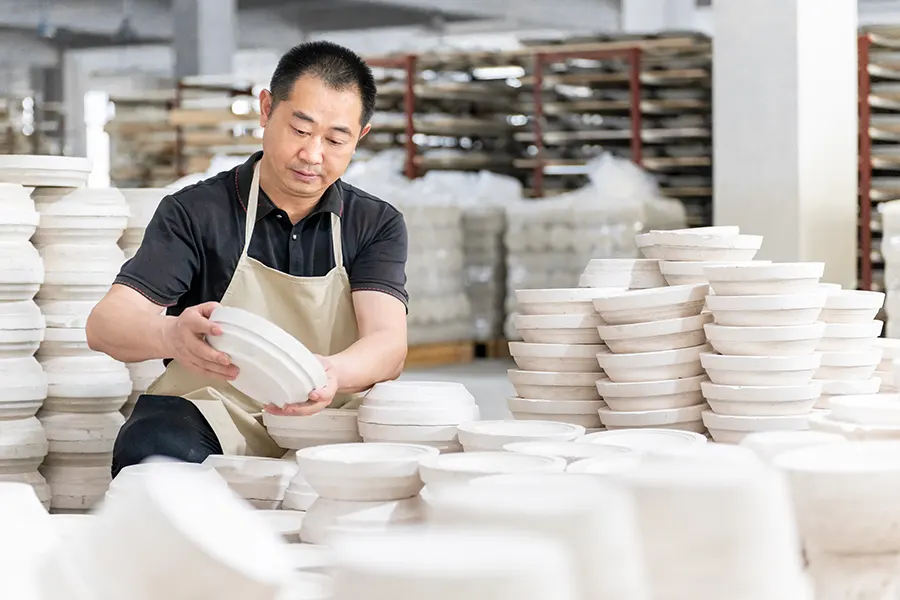
As últimas etapas envolvem o acabamento das placas e a garantia de que sua qualidade atenda aos mais altos padrões. Isso inclui:
- Alisamento e Polimento: Após a aplicação do esmalte e da decoração, quaisquer arestas ou imperfeições são suavizadas. Isso dá às placas uma aparência refinada e polida.
- Controle de qualidade: Cada placa é cuidadosamente verificada quanto a quaisquer defeitos, como rachaduras, bolhas de ar, ou inconsistências de esmalte. Quaisquer placas defeituosas são descartadas, garantir que apenas produtos de alta qualidade cheguem ao mercado.
Seguindo estas etapas meticulosas, placas de cerâmica são transformadas de matéria-prima em peças requintadas adequadas para nossas mesas de jantar. A experiência e a atenção aos detalhes durante todo o processo de produção resultam em durabilidade, funcional, e louças visualmente atraentes que melhoram nossas experiências gastronômicas.
Considerações ambientais
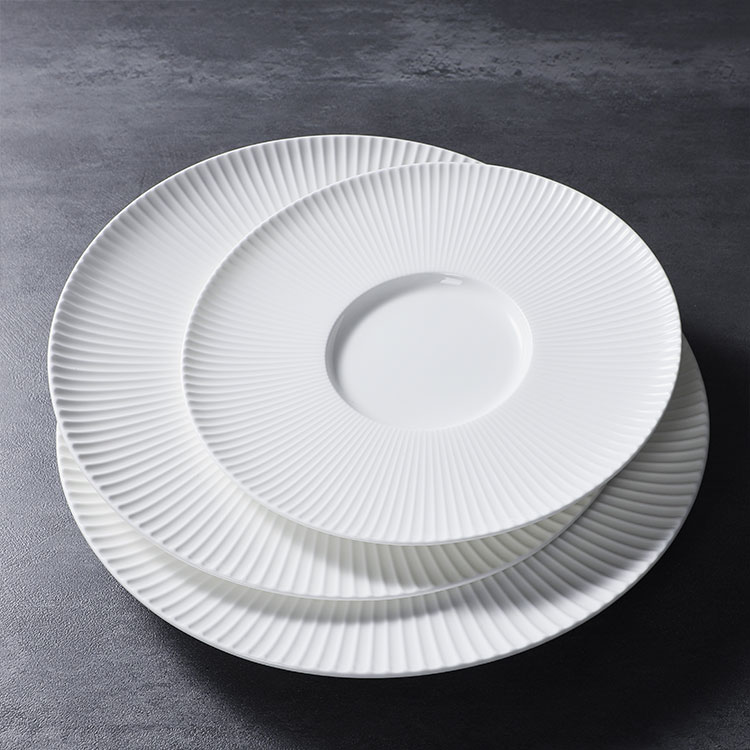
Além de suas qualidades estéticas e funcionais, placas cerâmicas também possuem benefícios ambientais que os tornam uma escolha sustentável para consumidores ecologicamente conscientes. Aqui estão algumas considerações ambientais notáveis:
- Uso de materiais naturais: As placas de cerâmica são feitas principalmente de argila, um material que ocorre naturalmente. Isso reduz a dependência de materiais sintéticos, tornando-os uma opção mais ecológica em comparação com placas feitas de plástico ou outras substâncias não biodegradáveis.
- Reciclabilidade: Placas cerâmicas são recicláveis, o que significa que podem ser triturados e reaproveitados como matéria-prima para novos produtos cerâmicos. Isto ajuda a reduzir o desperdício e promove uma economia circular.
- Resíduos plásticos reduzidos: Usando pratos de cerâmica em vez de descartáveis de plástico ou papel, você contribui para reduzir a quantidade de resíduos plásticos descartáveis gerados na indústria gastronômica. Isto ajuda a combater a poluição ambiental e os efeitos prejudiciais do plástico nos ecossistemas.
- Eficiência energética: Embora o processo de queima exija altas temperaturas, os avanços na tecnologia do forno tornaram-no mais eficiente em termos energéticos ao longo dos anos. Alguns fabricantes também começaram a utilizar fontes de energia renováveis para alimentar os seus processos de produção., reduzindo ainda mais a sua pegada de carbono.
- Práticas Sustentáveis: Muitos fabricantes de louças de cerâmica estão adotando práticas sustentáveis em suas operações. Isso pode incluir o fornecimento responsável de argila, minimizando o uso de água e energia, reduzindo as emissões de gases de efeito estufa, e implementação de programas de reciclagem.
Escolhendo pratos de cerâmica para suas necessidades gastronômicas, você está fazendo uma escolha consciente para reduzir seu impacto ambiental e contribuir para um futuro mais sustentável.
Conclusão
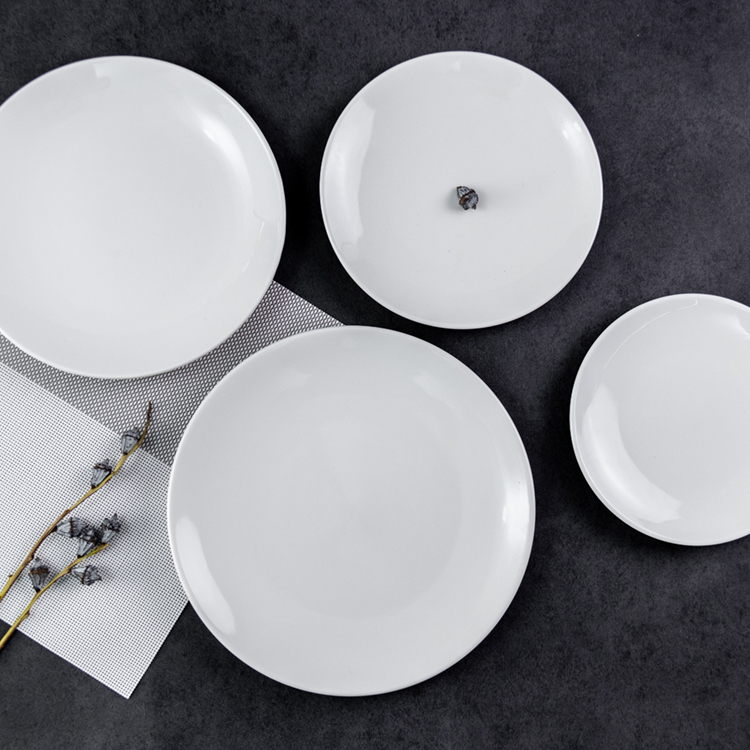
Ao compreender o processo por trás de sua criação, podemos apreciar melhor o valor e a beleza das placas cerâmicas. Não são apenas placas cerâmicas esteticamente agradável, mas eles também possuem durabilidade, retenção de calor, e uma ampla variedade de estilos para se adequar a qualquer configuração de mesa. Adicionalmente, suas qualidades ecológicas e reciclabilidade fazem deles uma escolha ambientalmente responsável para consumidores conscientes.
Da próxima vez que você saborear uma refeição servida em um prato de cerâmica, reserve um momento para apreciar a arte e a experiência envolvidas na criação de uma peça de jantar tão notável. Considere incorporar pratos de cerâmica em sua rotina gastronômica, sabendo que você está fazendo uma escolha sustentável sem comprometer o estilo ou a funcionalidade.

